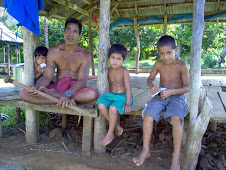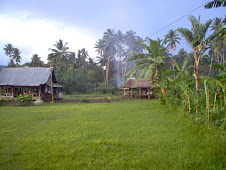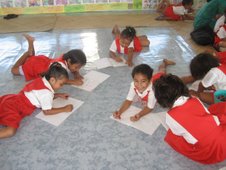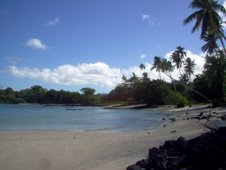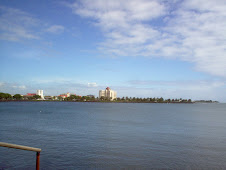This afternoon I’ve been watching several young men from the village fishing in the sea in front of my fale. The water inside the reef is so shallow that you can walk all the way to the reef (about ½ mile) in water only about waist deep. It’s crystal clear – like a huge swimming pool with no deep end. There are seven of them in their 20’s, bare to the waist with their traditional lavalavas tied a little shorter than usual to give them more agility in the water. Two men are holding the net – imagine a rectangle about 20 feet long and six feet wide. One is paddling in a traditional dugout outrigger canoe which is painted a bright turquoise – a brilliant contrast and compliment to the aquamarine sea. They walk along in the water looking for fish. Two of them have spears and some carry sticks. When they spot fish, they point in that direction and the men with the net begin to ease up toward them. When they are in position, the others run toward the net, beating the water with their hands and the sticks, shouting, chasing the fish toward the net. Occasionally one of the men leaps out of the water and dives forward, face down into the water, arms outstretched, scaring the fish toward the net. Then they all charge to the net trying to spear the fish or hit them with the sticks to stun them to be able to get them out of the water and into the canoe. In between, as they walk along, they sometimes push each other into the water, or throw their sticks into the air and try to catch them on the way down, just like young men everywhere. Two young boys about 10 or 12 years old float on pieces of salvaged wood a little distance away – watching, learning, When they finish fishing for the day they will divide the catch amongst themselves, and maybe share with other families depending upon the success of the day.
This morning I also watched a mother and her children walking in the water inside the reef looking for sea cucumbers, clams, or other shell fish. When they spotted something they would go under the water to gather it up. The boy, about 7 or 8 years old, alternately pulled along, and floated on, a white plastic bucket in which they placed their catch. When I saw them go out, I thought it would be interesting and maybe fun to go with them some time, but they were out there for about two hours in the water and the direct overhead sun beating down. It is after all, dinner, not amusement.
Wednesday, October 31, 2007
Polynesia
In Samoa (and in the rest of the South Pacific) Hawaii is not considered part of the United States. Of course they know that it is politically, but in ordinary conversation they are mutually exclusive. So I say that I’m from Hawaii and not from America (Amelika is the word for USA). It makes sense when one thinks about it. Hawaii was part of their culture and civilization long before it was part of our country. Hawaii’s culture is still very different from most of the U S of course. I think that one of the reasons that people enjoy vacationing there so much is that it’s “exotic” and feels like a foreign country in many ways, but has the benefit of being part of the U S.
All of the islands of Samoa put together (1,133 square miles) are about one-fourth of the size of the Big Island of Hawaii. The island that I live on here, Upolu, is roughly 50 miles long and 15 miles wide (about the same shape as the island of Molokai, which is about 30 miles long and about 6 miles wide).
The other major island, Savai’i, is also called the Big Island (I haven’t been there yet, but I’ll definitely go there). Samoans are convinced that Hawai’i is named for Savai’i, but historically everything I’ve read contradicts that. The Hawaiians came from the Marquesas between 300 and 1,000 CE with some later migrations from Tahiti. Samoa was settled about 3,000 years ago as part of the Polynesian migrations that began in Asia and continued throughout the Pacific. Polynesia is the term used for Pacific Islanders with similar ethnic and linguistic characteristics and close affinities to Malay people.
Samoa and Hawai’i are much alike in food, language, plants, and even the physical characteristics and society of the people. Someone in Hawai’i told me before I left to come here, that Samoa was like Hawai’i in the 1920’s or 30’s. That’s probably pretty close. Except for some of the modern conveniences like the internet, cell phones, and television.
Those same modern culture influences are some of the things challenging the country of Samoa today. The culture is still very religious, conservative, and modest. It’s difficult, especially for parents and teachers, when the children are exposed to American TV and movies, and god-knows-what on the internet. It’s not unlike some of the complaints that Islamic people have about Western countries. Religion here is kind of like that of Islamic nations. Not the theology of course, but the pervasiveness of it. It is not something that people do. It is who they are. It isn’t a place they go on Sundays, but an integral part of life everyday. Every public event includes a prayer to Atua (God). Nearly every article in the newspaper references Atua, even on the sport‘s pages. Everyday conversation and every meeting of any kind includes Atua. To eat a meal anywhere without saying “grace” is unthinkable. The country’s motto is “Samoa is founded on God.” And it clearly is. The missionaries who came in 1830 would be very pleased to know how successful they were.
All of the islands of Samoa put together (1,133 square miles) are about one-fourth of the size of the Big Island of Hawaii. The island that I live on here, Upolu, is roughly 50 miles long and 15 miles wide (about the same shape as the island of Molokai, which is about 30 miles long and about 6 miles wide).
The other major island, Savai’i, is also called the Big Island (I haven’t been there yet, but I’ll definitely go there). Samoans are convinced that Hawai’i is named for Savai’i, but historically everything I’ve read contradicts that. The Hawaiians came from the Marquesas between 300 and 1,000 CE with some later migrations from Tahiti. Samoa was settled about 3,000 years ago as part of the Polynesian migrations that began in Asia and continued throughout the Pacific. Polynesia is the term used for Pacific Islanders with similar ethnic and linguistic characteristics and close affinities to Malay people.
Samoa and Hawai’i are much alike in food, language, plants, and even the physical characteristics and society of the people. Someone in Hawai’i told me before I left to come here, that Samoa was like Hawai’i in the 1920’s or 30’s. That’s probably pretty close. Except for some of the modern conveniences like the internet, cell phones, and television.
Those same modern culture influences are some of the things challenging the country of Samoa today. The culture is still very religious, conservative, and modest. It’s difficult, especially for parents and teachers, when the children are exposed to American TV and movies, and god-knows-what on the internet. It’s not unlike some of the complaints that Islamic people have about Western countries. Religion here is kind of like that of Islamic nations. Not the theology of course, but the pervasiveness of it. It is not something that people do. It is who they are. It isn’t a place they go on Sundays, but an integral part of life everyday. Every public event includes a prayer to Atua (God). Nearly every article in the newspaper references Atua, even on the sport‘s pages. Everyday conversation and every meeting of any kind includes Atua. To eat a meal anywhere without saying “grace” is unthinkable. The country’s motto is “Samoa is founded on God.” And it clearly is. The missionaries who came in 1830 would be very pleased to know how successful they were.
Meeting of the Chiefs
I went to a matai council meeting in the village this week. The social structure of Samoa is based on the matai system which has been the way of life here for centuries. The matai system is intertwined with the basic unit of Samoan society, the ‘aiga, or family. The family in Samoa is a very comprehensive term, including the nuclear family; members of the (very) extended family, and their spouses and children; and persons “adopted” into the family. The matai heads the ‘aiga.
Families form the village community. A village is largely a self-governing unit controlled by the village council composed of the matai. There is also a village mayor but his role is primarily as a liaison to the national government. The matai council makes all the decisions and set the rules for the village. For example, some of the rules in my village include no beer drinking in the village, no facial hair for men, and use of only traditional fishing methods.
Matai are divided into orators (talking chiefs) and chiefs. It is the duty of the orators to understand local history and tradition and to be able to use a special variation of the Samoan language only used on formal occasions. Maybe some other time I’ll write more about the history and traditions.
The chiefs are given positions of respect and participate along with the orators in decision making and village politics. Depending upon their status, they may sway the decisions made by the village council in one direction or another. Each village usually has one or two “high chiefs” whose rank exceeds that of the other matai.
Apart from obligations to the village, the most important duty of every matai is to look after the family (which may be dozens of people). The matai controls the family land and allocates its use. Family members serve the matai by cooking food and cultivating crops. In turn, they receive food, lodging, and money as needed. Family members living away from the matai (even in other countries) may be called upon to make contributions of food or money for church or family functions.
Although the matai system may resemble a feudal baron who gave serfs protection in return for the services, the system differs in one important respect. Family members have a strong say in who becomes the matai. Usually direct heirs are the first to be considered, but they are not always successful. Samoan’s have a saying, “O le ala i le pule o le tautua.” – “Service is the way to power.” Frequently one who has served the matai faithfully succeeds him. Discussions regarding matai titles are made on a consensual basis and sometimes difficult to reach. Occasionally a woman may be made a matai, but usually they are men.
Not all matai live up to the standards set by the system. Members of the family can express dissatisfaction and seek removal of the title, but this is rare. Like positions of leadership worldwide, some are active leaders, some are active followers, and some are along just for the ride.
So here’s what a matai council meeting looks like. The matai are seated cross-legged) on the floor of an open fale, a large one, maybe 40 or 50 feel long, which is the one designated for village council meetings. An “open fale” is a raised (two or three feet high) concrete foundation with posts from floor to ceiling averaging about ten inches in diameter and spaced about four feet apart. The sloping roof is galvanized metal nowadays, often painted a rusty red color, but was coconut frond thatch in the past. There is an overhang of a few feet all around.
The early birds get a post, but there are also designated seating arrangements. The high chief(s) sit at the end, and the highest orators are seated on one of the long sides. The rest of the matai are seated along the other side.
At the beginning of each meeting there is an ava ceremony. Some of you have heard of ava, or kava, as it’s called some places in the Pacific. Samoan ava is notoriously weak, so if you’ve experienced it elsewhere, it may have had more of a “punch” than Samoan ava. Ava is a drink made from the dried and pulverized root of a plant (piper methysticum). I hadn’t tasted it before I came to Samoa, although I had seen it in Hawaii. It tastes and looks kind of like dishwater. Not that I’ve made a practice of drinking dishwater, but I think have a general idea of what that tastes like! There is a specialized ritual which can be longer or shorter depending upon the occasion. For a matai meeting, there are three untitled young men (usually in their 20’s or 30’s) who sit on a fala mat, with one of the matai. They sit a few feet in front of the long row of matai whose backs are to the posts. The ava is in a wooden bowl that stands on little carved legs all around the edges of the bowl. One of the young men sits behind the bowl. Another serves the ava in half of a coconut shell. The third young man calls out the ceremonial ritual, directing the service of the ava in the appropriate order according to rank. I am served after the high chief (whom I also sit beside at the end of the fale).
When given the cup of ava, the proper procedure is to pour out a drop or two on the mat beside you while saying, “Lau ava lea le Atua.” – “God, here is your ava.” Then you say, “Soifua!” or “Manuia!” – which basically means “Good health to you!” Then you drink it and give the cup back to the server. You take only one drink. If you don’t finish it all in one drink, you toss the remainder in the cup out of the fale over your shoulder.
So besides the taste, what is ava like? I have only had these small sips (at five ceremonies since I’ve been here), but I’m told that if you drink a lot of it your tongue and lips will get sort of numb (it is part of the pepper family) and that it is a general relaxant. It’s not intoxicating like alcohol.
After the ava ceremony the chief orator begins the meeting with the appropriate honorifics and traditional language, always including thanks to God. And then they commence with the business of the day. Decisions are made by consensus and every opinion is heard and discussed. A simple majority is not used to make a decision. Whoever wishes to speak on a subject may do so (often at great length) and without interruption.
Families form the village community. A village is largely a self-governing unit controlled by the village council composed of the matai. There is also a village mayor but his role is primarily as a liaison to the national government. The matai council makes all the decisions and set the rules for the village. For example, some of the rules in my village include no beer drinking in the village, no facial hair for men, and use of only traditional fishing methods.
Matai are divided into orators (talking chiefs) and chiefs. It is the duty of the orators to understand local history and tradition and to be able to use a special variation of the Samoan language only used on formal occasions. Maybe some other time I’ll write more about the history and traditions.
The chiefs are given positions of respect and participate along with the orators in decision making and village politics. Depending upon their status, they may sway the decisions made by the village council in one direction or another. Each village usually has one or two “high chiefs” whose rank exceeds that of the other matai.
Apart from obligations to the village, the most important duty of every matai is to look after the family (which may be dozens of people). The matai controls the family land and allocates its use. Family members serve the matai by cooking food and cultivating crops. In turn, they receive food, lodging, and money as needed. Family members living away from the matai (even in other countries) may be called upon to make contributions of food or money for church or family functions.
Although the matai system may resemble a feudal baron who gave serfs protection in return for the services, the system differs in one important respect. Family members have a strong say in who becomes the matai. Usually direct heirs are the first to be considered, but they are not always successful. Samoan’s have a saying, “O le ala i le pule o le tautua.” – “Service is the way to power.” Frequently one who has served the matai faithfully succeeds him. Discussions regarding matai titles are made on a consensual basis and sometimes difficult to reach. Occasionally a woman may be made a matai, but usually they are men.
Not all matai live up to the standards set by the system. Members of the family can express dissatisfaction and seek removal of the title, but this is rare. Like positions of leadership worldwide, some are active leaders, some are active followers, and some are along just for the ride.
So here’s what a matai council meeting looks like. The matai are seated cross-legged) on the floor of an open fale, a large one, maybe 40 or 50 feel long, which is the one designated for village council meetings. An “open fale” is a raised (two or three feet high) concrete foundation with posts from floor to ceiling averaging about ten inches in diameter and spaced about four feet apart. The sloping roof is galvanized metal nowadays, often painted a rusty red color, but was coconut frond thatch in the past. There is an overhang of a few feet all around.
The early birds get a post, but there are also designated seating arrangements. The high chief(s) sit at the end, and the highest orators are seated on one of the long sides. The rest of the matai are seated along the other side.
At the beginning of each meeting there is an ava ceremony. Some of you have heard of ava, or kava, as it’s called some places in the Pacific. Samoan ava is notoriously weak, so if you’ve experienced it elsewhere, it may have had more of a “punch” than Samoan ava. Ava is a drink made from the dried and pulverized root of a plant (piper methysticum). I hadn’t tasted it before I came to Samoa, although I had seen it in Hawaii. It tastes and looks kind of like dishwater. Not that I’ve made a practice of drinking dishwater, but I think have a general idea of what that tastes like! There is a specialized ritual which can be longer or shorter depending upon the occasion. For a matai meeting, there are three untitled young men (usually in their 20’s or 30’s) who sit on a fala mat, with one of the matai. They sit a few feet in front of the long row of matai whose backs are to the posts. The ava is in a wooden bowl that stands on little carved legs all around the edges of the bowl. One of the young men sits behind the bowl. Another serves the ava in half of a coconut shell. The third young man calls out the ceremonial ritual, directing the service of the ava in the appropriate order according to rank. I am served after the high chief (whom I also sit beside at the end of the fale).
When given the cup of ava, the proper procedure is to pour out a drop or two on the mat beside you while saying, “Lau ava lea le Atua.” – “God, here is your ava.” Then you say, “Soifua!” or “Manuia!” – which basically means “Good health to you!” Then you drink it and give the cup back to the server. You take only one drink. If you don’t finish it all in one drink, you toss the remainder in the cup out of the fale over your shoulder.
So besides the taste, what is ava like? I have only had these small sips (at five ceremonies since I’ve been here), but I’m told that if you drink a lot of it your tongue and lips will get sort of numb (it is part of the pepper family) and that it is a general relaxant. It’s not intoxicating like alcohol.
After the ava ceremony the chief orator begins the meeting with the appropriate honorifics and traditional language, always including thanks to God. And then they commence with the business of the day. Decisions are made by consensus and every opinion is heard and discussed. A simple majority is not used to make a decision. Whoever wishes to speak on a subject may do so (often at great length) and without interruption.
Wednesday, October 10, 2007
The First Weeks in Poutasi
Tomorrow I will have been in Poutasi for seven weeks. As I knew it would, life here gets easier every day. Although I still miss the privacy of having my own house, my host family is very kind and I like them. I’m gradually learning the names of people in the village and actually starting to remember some of them when I see them.
I’m still challenged with understanding the spoken language much of the time, but that will come with practice. People in the village tell me all the time how well I speak Samoan.
For those of you familiar with the Hawaiian language, you know how subtle the nuances are, especially in Polynesian languages where the words are mostly vowels. For example:
ia (ē’-ah) means “he, she or it,” “these” or adds an emphasis which means “this one and no other” (Ia a’u? Ia oe! = Do you mean me? Yes, you!) Spoken with a rising tone and a glottal stop at the end, it means “very well then” or “all right then.”
‘ia (note the inverted comma which indicates a glottal stop making the i (ē) a short sound) means “in order to” or “yes.”
‘iā (note the macron indicating the vowel sound is held longer) can mean “in, at, on, for” depending on the context. ‘Iā is also the command given at the start of a race like, “Ready, set, go!”
and i’a means “fish.”
It's hugely contextual as you can tell!
My job for the first few months here is to get to know the village. I’m creating a village map and writing a report called the Village Situational Analysis which will compile info about the village such as population statistics (I’ll be doing a house-to-house survey), environmental overview, economic and agricultural assessment, health and school issues, community resources, etc. Although I have already been told about some of the projects that they would like me to do, this analysis will help to focus on possible projects and activities and the resources necessary to accomplish them.
So I’m not busy all day long. Actually, if I accomplish one Peace Corps related project each day I’m satisfied at this point. It may be attending a village meeting or church service or just studying the language. I’m sometimes torn between wanting to get started and charge ahead with some of the projects, and yet knowing that it’s best to understand the village, the personalities, the resources, etc. before I can expect to be successful. It’s important that it not be “my project,” but the village’s project.
So I’m doing a lot of reading, which I never get tired of, and writing. I started working on a garden this week. I’m learning to have more patience, which has never been one of my strengths.
I’m still challenged with understanding the spoken language much of the time, but that will come with practice. People in the village tell me all the time how well I speak Samoan.
For those of you familiar with the Hawaiian language, you know how subtle the nuances are, especially in Polynesian languages where the words are mostly vowels. For example:
ia (ē’-ah) means “he, she or it,” “these” or adds an emphasis which means “this one and no other” (Ia a’u? Ia oe! = Do you mean me? Yes, you!) Spoken with a rising tone and a glottal stop at the end, it means “very well then” or “all right then.”
‘ia (note the inverted comma which indicates a glottal stop making the i (ē) a short sound) means “in order to” or “yes.”
‘iā (note the macron indicating the vowel sound is held longer) can mean “in, at, on, for” depending on the context. ‘Iā is also the command given at the start of a race like, “Ready, set, go!”
and i’a means “fish.”
It's hugely contextual as you can tell!
My job for the first few months here is to get to know the village. I’m creating a village map and writing a report called the Village Situational Analysis which will compile info about the village such as population statistics (I’ll be doing a house-to-house survey), environmental overview, economic and agricultural assessment, health and school issues, community resources, etc. Although I have already been told about some of the projects that they would like me to do, this analysis will help to focus on possible projects and activities and the resources necessary to accomplish them.
So I’m not busy all day long. Actually, if I accomplish one Peace Corps related project each day I’m satisfied at this point. It may be attending a village meeting or church service or just studying the language. I’m sometimes torn between wanting to get started and charge ahead with some of the projects, and yet knowing that it’s best to understand the village, the personalities, the resources, etc. before I can expect to be successful. It’s important that it not be “my project,” but the village’s project.
So I’m doing a lot of reading, which I never get tired of, and writing. I started working on a garden this week. I’m learning to have more patience, which has never been one of my strengths.
Subscribe to:
Comments (Atom)


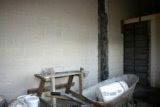

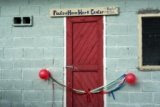
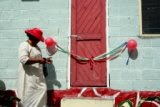
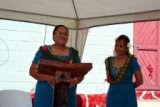
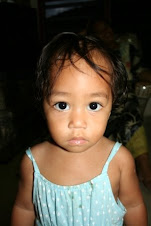
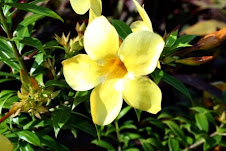
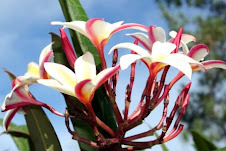
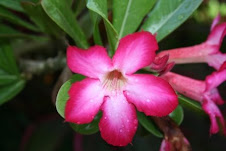

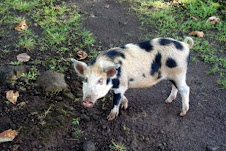

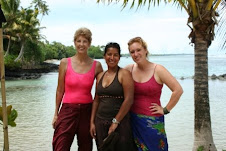

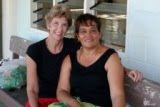

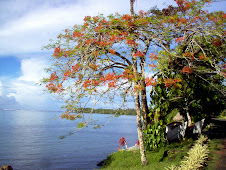
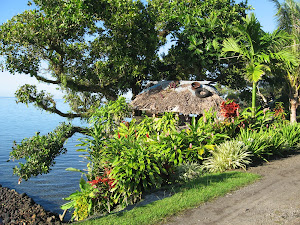
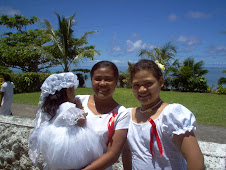
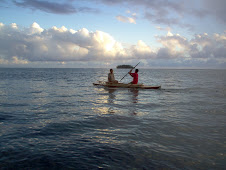

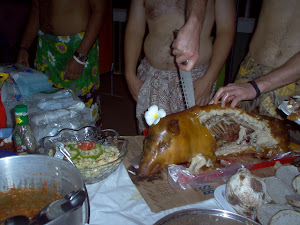
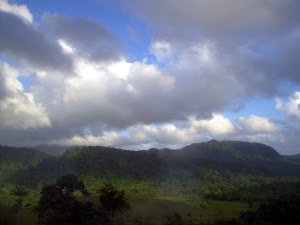
.jpg)
